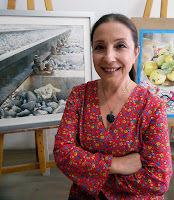ABU RAWASH
NWS: National Watercolor Society member
AAAI - the Australian Association of Architectural
Illustrators
SAS -Archaeological illustration professional member
CUS: Cairo Urban Sketchers member.
Founder of:
-(Tasmeem) Architecture Design Society 2001
(which bred Cairo Urban Sketcher)
-Abu Rawash Prize for art & design, 2016.
-Founder and editor-in-chief of SELECTED artist magazine.
Egyptian architect was born in 1981 In Giza, Abu Rawash
earned a Bachelor of architecture degree from Cairo University.
He best known for his
architectural illustration. He has worked as an architect, Landscape
designer, interior designer, architectural illustrator, as well as becoming an
archaeology illustrator.
Between 2005 and 2013 he worked as an
architecture/illustration instructor in architecture department (Cairo
University and aviation academy) and He has also held watercolor workshops,
more than 12 years.
In 2016, he began spending more time painting in
watercolors,.. and now he develops a micro realistic watercolor technique in
his studio .. He ushered a project of
archaeology illustration about the destroyed monuments in Syria,
(digital and watercolors).He sees this art project as a connection to
exhibiting feelings of history nostalgia , He feels the ancient time in each brush
touch, and express this feeling , to make his paintings not only a copy of the
reference pictures, also he sets up his plein air easel, and paint outdoors in
many beautiful ancient places around the
world.
In 1996, at age of 15, he started Cubism, he produced dozens
of paintings, he exhibited in Egyptian Ministry of culture exhibition,
Television theaters, ANNUAL YOUTH SALON AT THE CAIRO OPERA HOUSE.
in this period he met and learned from famous Egyptian
artists like: Husain Bikar and Mostafa Al Razaz.. Dr. Al Razaz was
supporting and take care of Abu Rawash
as he recognized that he has an outstanding professional talent..(2000-2005)The
Cubism period ultimately affecting his
visual thinking of architecture, he went on to embrace deconstruction style.





Comments
Post a Comment